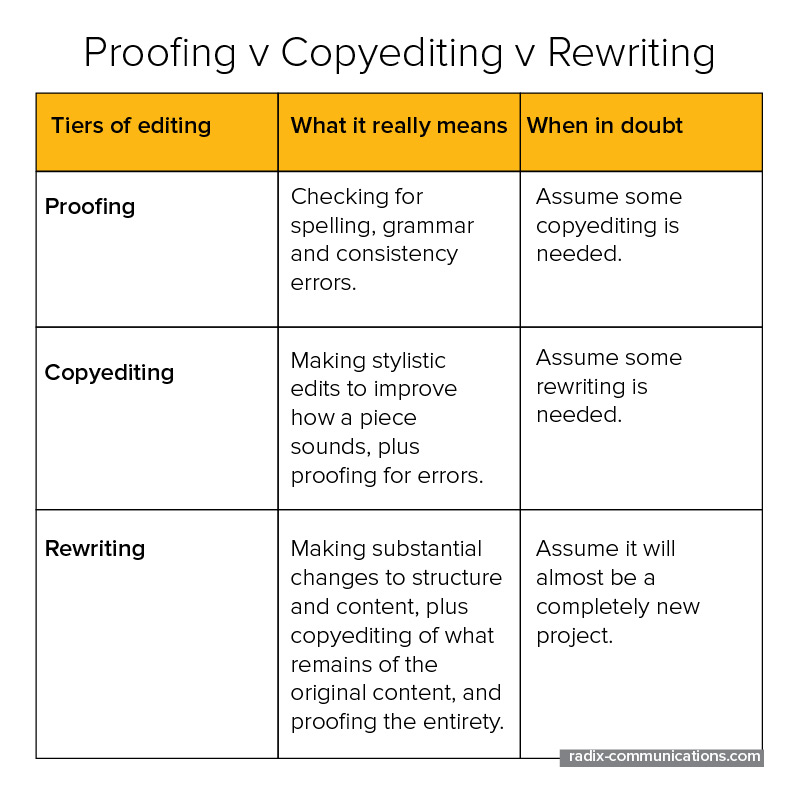We’ve all been there. You (or one of your clients) have a great idea for a piece of content, it seems simple enough to create, and you drop it in with the most readily-available resource to bring it to life.
Then it happens. Flop. It’s all gone Pete-flippin’-Tong.
Perhaps it’s gone to the wrong writer – someone without the requisite knowledge of the market or subject area to do the best job first time.
Or maybe you’ve just had a stab at writing it yourself and – much like the shelving unit you were sure you could build on your own – it now hangs loosely from the wall, crying out for some expert attention.
That’s usually the point a marketer will turn to an external professional. And as a result, I find myself rescuing clients’ broken projects more often than any of us would probably care to admit.
So if you’re experiencing a content SOS, read on. Here are a few tips I’ve picked up along the way, to help you get things back on track.
#1) Settle in for a long task
One of the most common misconceptions I come across is that rescuing a piece of content is a lot easier than writing it from scratch. Not only is this incorrect, it’s the kind of thinking that can seriously hinder your content rescue operation.
A quick fix is rarely the best one, and solving this issue properly is going to take time. While yes, sometimes large swathes of the existing content may be reusable, it’s important to recognise the unique challenges posed by a project gone wrong.
There’s a higher level of stakeholder expectation than usual, because this has already gone through a failed attempt – even if that failure wasn’t yours personally.
Meeting that expectation takes time, focus, and dedication to turning this tangled mess into the best piece of content it can be. Chances are, it was rushing that got you here in the first place. Doing it again isn’t going to help you get out.
#2) Conduct a full content autopsy
Before you can fix the problems with your content, you need to understand what those problems are.
The you there is very important. Even if your angry stakeholder or bemused boss has a very clear idea of what they think is wrong with the piece, it’s important that you conduct your own analysis of the problems that conspired to cause its demise.
Often, big problems (think ‘this reads horribly’ or ‘you’ve entirely missed the point’) are caused by a series of much smaller, underlying issues with the piece. It’s on you to sniff those things out.
Inversely, one big misconception could be throwing up lots of false problems with the content. In that case, you need to be able to look past what the person giving the feedback has decided is the big problem, and determine where the piece really went off track.
It’s worth spending some time really breaking down where things went awry, so you can resolve all the problems with the piece at once – rather than treating the most prominent symptoms and hoping that cures the disease.
(And if you’re not sure of the best ways to pinpoint what you don’t like about a piece, check out David’s blog post that details 5 tests your B2B copy needs to pass.)
#3) Rebuild your story
Once you’ve identified what the major (and minor) problems are with the piece, you’ll need to start planning out a revised story or structure for it. This process can vary in difficulty depending on how much you’ve had to edit and cut away.
If you’re truly able to say that the issues are isolated to specific sections of the copy, then great – you’ve probably not got much work to do. However, in my experience, the kind of problems that cause total content failure tend to be pretty insidious.
With all of the bad cut away, you’re likely to end up with a bit of a mess of points that, while objectively correct and of value, don’t stand up on their own without a coherent narrative.
You’ve got to rebuild that narrative. You must find the thread that links the copy you’ve identified as salvageable – filling in the gaps as needed once you’ve done so.
#4) Fill in the blanks (and don’t be afraid to do some serious rewriting)
Personally, once I’ve cut out the irrelevant copy and information from a piece like this, I like to approach it as I would a completely fresh project.
The copy left over acts as a brief, giving me the key points I need to hit – and when paired with feedback on what’s missing, forms a full picture of what this piece actually needs to say, do, and look like.
The key here is looking at the previous content as source material rather than copy you need to keep. All too often I’ve seen writers try to crowbar passages from a failed piece into the revised version. Usually, that’s a mistake; while there’s nothing wrong with those passages per se, keeping them forces the writer to approach their new copy in a specific and limited way.
Much like a piece of a jigsaw puzzle, a pre-existing passage clearly defines what can and cannot connect to it. Trying to drop pre-loved copy into a reworked piece puts a burden on your new creation, dictating and shaping what you can write around it.
Inevitably, this pulls the copy in a direction. And problematically – because the existing passages have been lifted from a piece that didn’t work – that direction tends to be the exact one you’re trying to get away from.
(If you’d like to learn a bit more about the differences between copyediting and rewriting, my colleague George explored the subject in detail a couple of years ago.)
There is no quick fix
The one thing I’m really trying to pass on through these tips is that fixing a problem piece of content takes three key things: time, care, and attention. It’s as much as – if not more of – a job than writing something from scratch.
Understanding that, and making your peace with it, really is half the battle.
The problem is, when you face a challenge like this, you’re usually up against the clock. Very few marketers factor an allocation for ‘total first draft failure’ into their project timelines, so it’s easy to feel the squeeze when it comes to turning a rewritten or restructured piece around.
Once you understand the value of investing a decent chunk of time into a thorough rework instead of just slapping on a few plasters and hoping for the best, it’s worth selling that idea to others around you so you’ve got the time to do this right.
If you aren’t given the luxury of that time, though, you do have options. You could always hand it off to some experts that have a lot of experience helping businesses and agencies out of situations like this – and are masters of creating great content within tight turnaround times.
Now if only I knew where you could find that…




